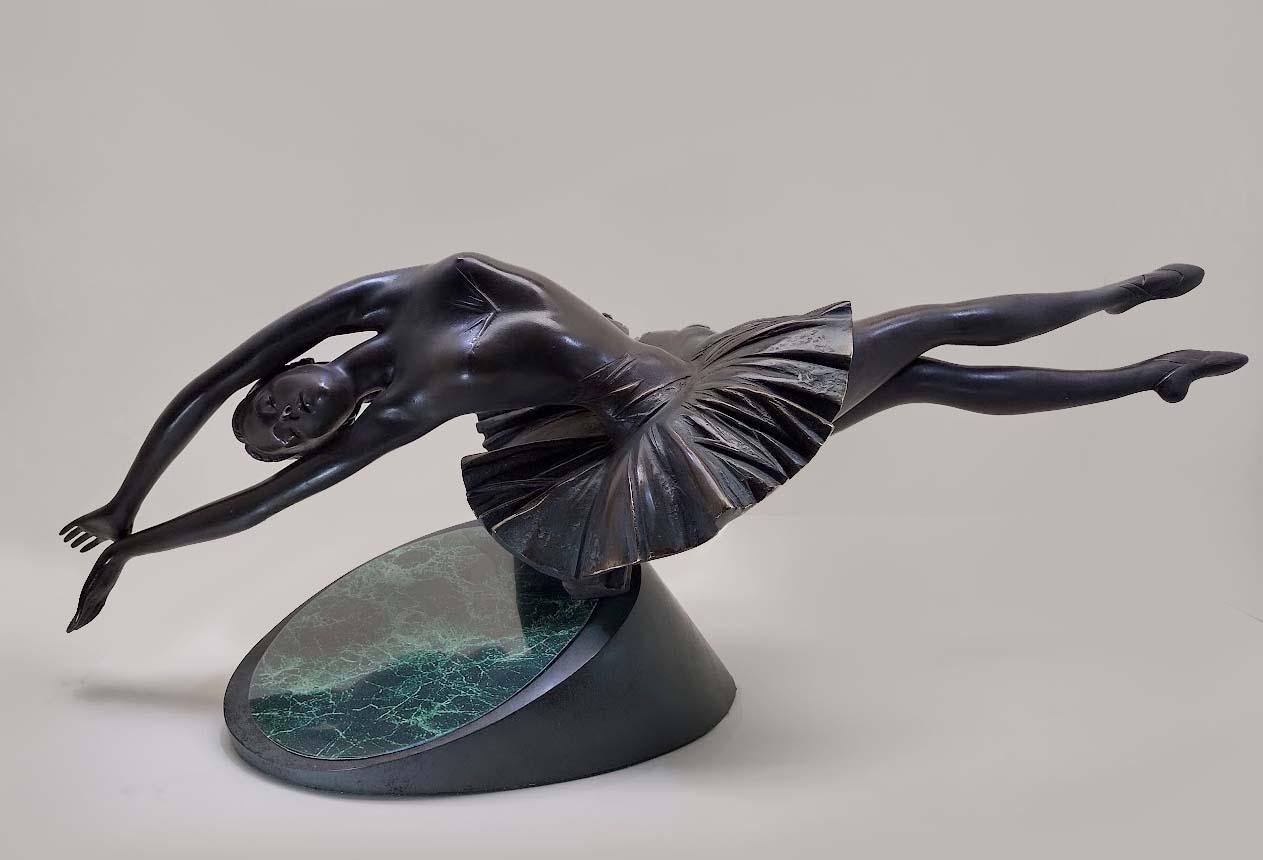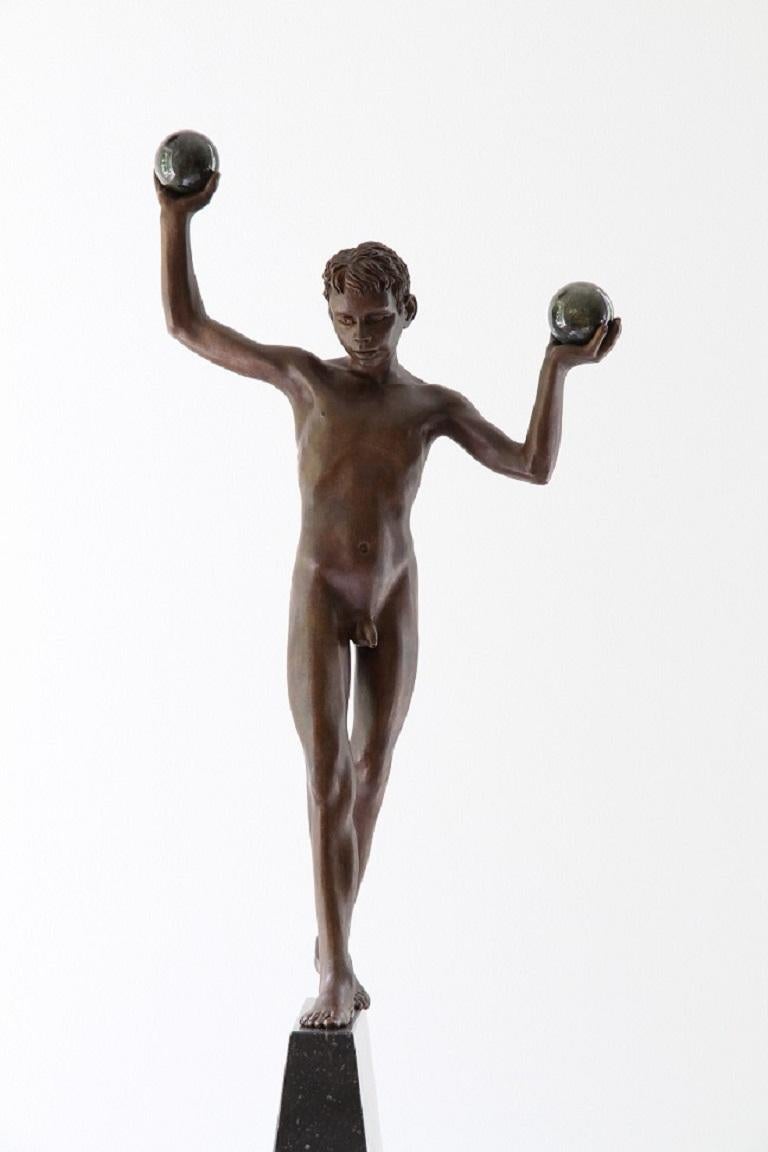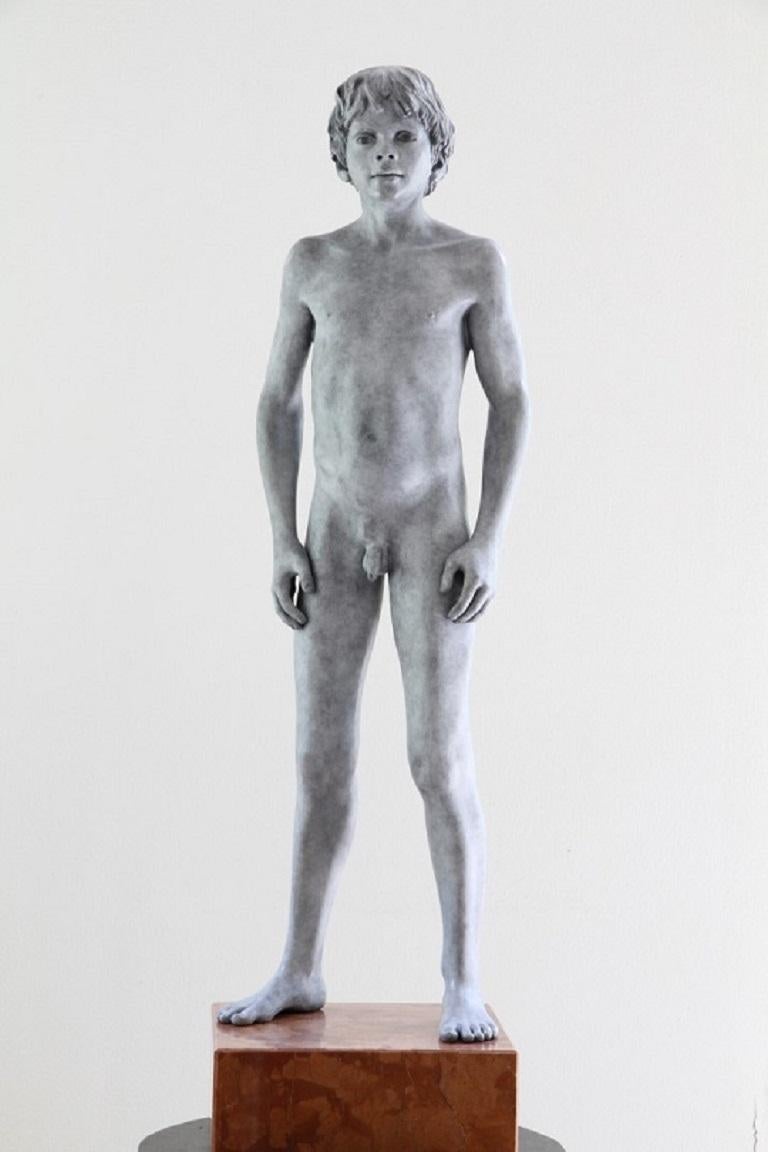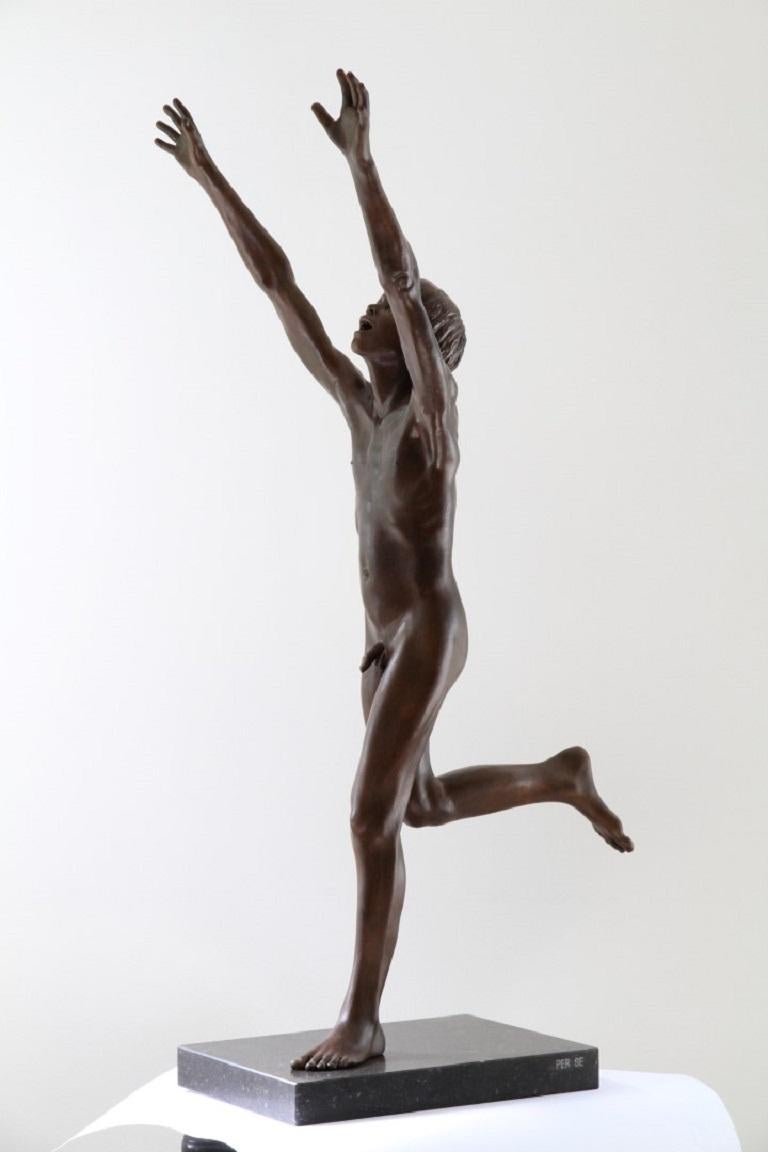Items Similar to Bronze Head of a Young Boy, Early 20th Century English Sculpture
Want more images or videos?
Request additional images or videos from the seller
1 of 2
Early 20th Century English SchoolBronze Head of a Young Boy, Early 20th Century English Sculpture
About the Item
English School
Early 20th Century
Head of a Young Boy
Bronze with stone base
Height: 12 3/4 inches (32.5 cm)
- Creator:Early 20th Century English School
- Dimensions:Height: 12.5 in (31.75 cm)Width: 5 in (12.7 cm)
- Medium:
- Period:
- Condition:
- Gallery Location:London, GB
- Reference Number:1stDibs: LU52413416882
About the Seller
5.0
Vetted Seller
These experienced sellers undergo a comprehensive evaluation by our team of in-house experts.
Established in 2007
1stDibs seller since 2014
63 sales on 1stDibs
Typical response time: 2 hours
- ShippingRetrieving quote...Ships From: London, United Kingdom
- Return PolicyA return for this item may be initiated within 14 days of delivery.
More From This SellerView All
- Bust of Frederick William Walker, 19th Century Figurative SculptureLocated in London, GBHope-Pinker was born in Peckham, Surrey, the son of a stonemason and builder employing 5 or 6 men c.1871 in Hove, Sussex, who seems to have taught his son much of his stone-carving skills, although he also attended the Royal Academy Schools (c.1871). Hope-Pinker typically carved without a model from drawings. The bulk of his work was portrait sculpture and John Hunter...Category
19th Century English School Figurative Sculptures
MaterialsBronze
- Reclining Figure Carved Marble Early 20th Century FranceLocated in London, GBCircle of Henri-Gaudier-Breska 1891-1915 Reclining Figure Carved marble Height 5 inches Born Henri Alphonse Séraphin Marie Gaudier near Orléans in France, Gaudier-Brzeska started using his hyphenated name in 1910 when he met the Polish writer Sophie Brzeska. They moved to London together in January 1911 and adopted their new names and the identity of brother and sister in order to make their cohabitation respectable. Gaudier-Brzeska started to establish himself as a sculptor in 1912. Initially influenced heavily by Rodin, he later assimilated more influences from the modernist movement of cubism and from examples of non-European art he saw in London’s museums. He met the sculptor Jacob Epstein in June 1912, who further encouraged him to break with classical Greek tradition. While working from 25 Winthorpe Road in 1913–14, Gaudier-Brzeska became increasingly involved in London’s avant-garde art scene. He exhibited at the London Salon in July 1913, where he met the poet and arts patron Ezra Pound. Pound described Brzeska as ‘like a well-made young wolf or some soft-moving, bright-eyed wild thing’. Gaudier-Brzeska subsequently became associated with the vorticist movement led by Wyndham Lewis, contributing two important articles to Lewis’s magazine Blast and signing his name against the vorticist manifesto. He was also a founding member of the London Group, which formed when the all-male Camden Arts Group joined with independent artists to challenge the dominance of the Royal Academy of Arts. Other founding members included Walter Sickert, Robert Bevan and Spencer Gore...Category
Early 20th Century Figurative Sculptures
MaterialsMarble
- Lambeth Plate, English Delftware, Blue and White Design c. 1750Located in London, GBEnglish Delftware blue and white plate, painted with a flower and bird design Diameter: 8 3/4 inches (22.25 cm) Delftware is also known as Delft Blue, was originally a general term ...Category
1750s Sculptures
MaterialsCeramic, Delft
- Hand Carved Wooden Frame, 16th Century European SchoolLocated in London, GBHand Carved Fruit Wood Length: 16 inches (40.5 inches) A striking, richly hand carved frame in high relief. It shows a rich decor of natural organic forms alongside a collection of ...Category
16th Century Figurative Sculptures
MaterialsWood
- Wooden Maquette of a Leg, Hand Carved British SculptureLocated in London, GBHand-carved wooden trunk and plinth Height: 38 1/2 inches (98 cm) Width: 10 1/2 inches (27 cm) Lawson Rudge Lawson Rudge was born in 1936. He is...Category
20th Century Realist Figurative Sculptures
MaterialsWood
- Wolfgang Amadeus Mozart, 18th Century Half Length SculptureLocated in London, GBPlaster, raised pins and later coloured to simulate terracotta Height: 32 3⁄4 inches (83.5 cm). Full of elegance and liveliness, it conveys the consummate ability of the artist. Be...Category
19th Century Academic Figurative Sculptures
MaterialsPlaster
You May Also Like
- BALLERINA (Homage to Saint-Saens)Located in Aberdeen Dyce, GBThis sculpture completes the «Ballet» series.Category
2010s Figurative Sculptures
MaterialsStone, Bronze
- Aquila Bronze Sculpture Nude Boy Marble Stone Contemporary In StockBy Wim van der KantLocated in Utrecht, NLAquila Bronze Sculpture Nude Boy Marble Stone Contemporary In Stock - Sculpture without Stone is 57 cm high Wim van der Kant (1949, Kampen) is a selftaught a...Category
21st Century and Contemporary Contemporary Nude Sculptures
MaterialsMarble, Bronze
- Tollit Bronze Sculpture Nude Boy Contemporary Male Figure Balance Marble StoneBy Wim van der KantLocated in Utrecht, NLTollit Bronze Sculpture Nude Boy Contemporary Male Figure Balance Marble Stone Wim van der Kant (1949, Kampen) is a selftaught artist. Next to his bu...Category
21st Century and Contemporary Contemporary Nude Sculptures
MaterialsMarble, Bronze
- Tuemini Ergo Sum Bronze Sculpture Nude Boy Male Figure Marble Stone In StockBy Wim van der KantLocated in Utrecht, NLTuemini Ergo Sum Bronze Sculpture Nude Boy Male Figure Marble Stone - In Stock - Height Sculpture without Stone pedestal: 78 cm Wim van der Kant (1949, Kampen) is a selftaught artis...Category
21st Century and Contemporary Contemporary Nude Sculptures
MaterialsMarble, Bronze
- Insilit Bronze Marble Stone Nude Contemporary Sculpture Boy Jumping In StockBy Wim van der KantLocated in Utrecht, NLInsilit Bronze Marble Stone Nude Contemporary Sculpture Boy Jumping In Stock - Sizes of sculpture, without Stone pedestal : 40 x 32 x 22 cm Wim van der Kant (1949, Kampen) is a sel...Category
21st Century and Contemporary Contemporary Nude Sculptures
MaterialsMarble, Bronze
- Per Se Bronze Contemporary Sculpture Nude Boy Male Figure Marble StoneBy Wim van der KantLocated in Utrecht, NLPer Se Bronze Contemporary Sculpture Nude Boy Male Figure Marble Stone Wim van der Kant (1949, Kampen) is a selftaught artist. Next to his busy profession as a...Category
21st Century and Contemporary Contemporary Nude Sculptures
MaterialsMarble, Bronze





